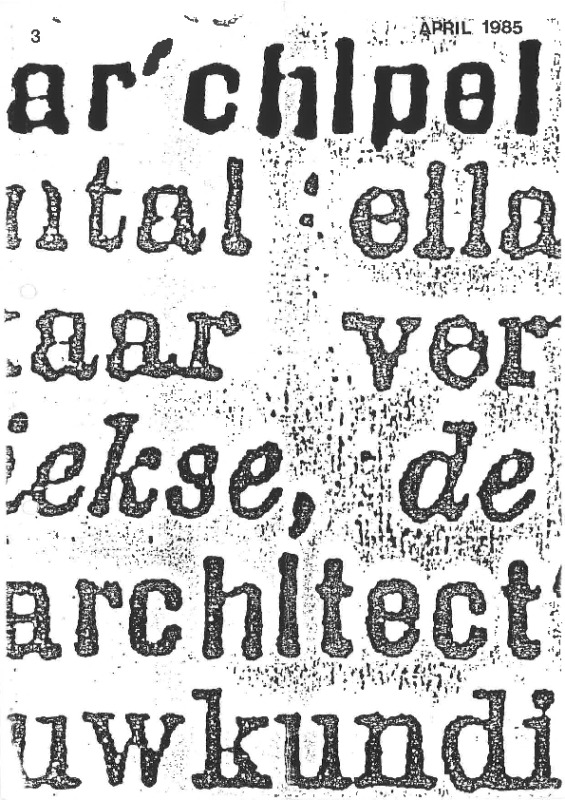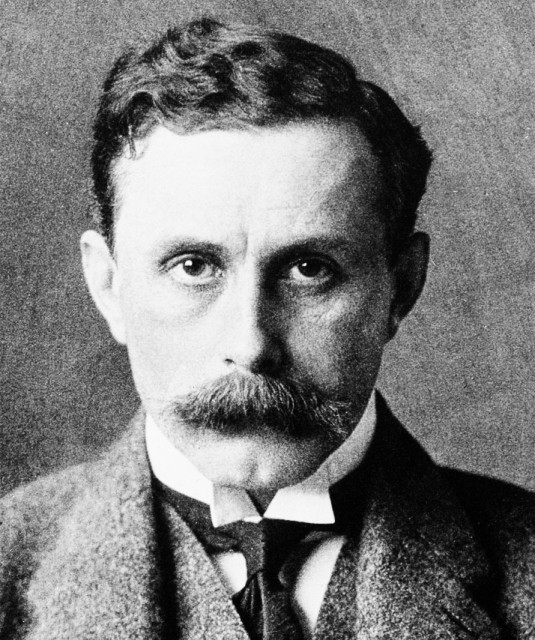Architecture ideologies (part 1)
(Autotranslated)
“There is no field in which so much talk and gezwetst is when the architecture,” says Firmin Mees in the attached interview.
“Architects speak with tongues regretted and signals interlocking puzzle formulas to” writes Gerrit Komrij, author of angry essay “The evil eye”.
_uit ‘De Standaard’ of 21 May 1984 _
- What do builders and what shape it? *
- “ARCHITEKT CAN LEARN A LOT OF BOKRIJK” *
The large auditorium of the Technical University in Delft, a moment ago. From the hands of a ceremonial toga-clad rector receives engineer-architect Firmin Mees, assistant at the faculty of Applied Sciences at Ghent University, a doctorate in technical sciences. That coveted degree is awarded after defending a thesis on “Architektuurideologieën, Study and Criticism of Fundamentals.”
- Three levels *
Why Mees years started back to a doctorate?
“Because I was instigated by my professors Charles Vermeersch and Jacob Kint. I wanted to work in each case on an issue that was not technical. What fascinated me was the way people think working with architecture, as well as the way that thinking will result in a form. For such a topic I had to go to Zurich or to Delft. Zurich presented problems of a family nature. So it was Delft. With Professor Herman Hertzberger, a world authority think in terms of the architectural. “
What was the basic objective of your work?
“There is no field in which so much talk and gezwetst is like the architecture. Rather than once again to make a stylistic analysis of buildings I wanted to find out who to tell in this chaos of ideas and ideologies has meaningful things. In thinking about achitektuur I distinguish three levels. Ideologies that focus exclusively on the pure art, I define as ideologies of the first order. When they additionally involve the human individual and the wealth of ideas, I call them ideologies of the second order. Finally, there is the third order. They inkorporeert society in her thinking and bring forth ideas and visions regarding the “built environment”
- An example of an ideology of the first order? *
“The Austrian Adolf Loos, who fifty years ago in his essay” Ornament and Crime “any form of decoration of rejects because of his insight that only savages use of interior (tattoos) on themselves and their utensils. As the cultural level of a people rises gradually disappear any kind of ornament. In other words to the degree of absence of ornament, one can deduce the degree of cultural development of a community.
“Such a transposing thinking without substance and proves that architecture has to make many great architects with an emotional approach to a formal problem that then afterwards mostly through rational (or pseudo-rational) statements supported. The true motivation for Loos’ radical purist standpoint should be sought mi i nthe profound distaste for the frustrating architektuurstijlen of the 19th century, where one of interior, under the guise of artistic liberalism, the other replaced, but not brought about fundamental change. Conclusion: quality first-order architecture grows out of the emotional-intuitive rather than rational from the wealth of the designer. “
Architecture yet encompasses more than just functional, constructive and formal aspect. She is there for and by man.
“That’s exactly what I call the second-order ideology. She focuses on the relationships between man and architectonic object. Architecture plays a major role as a carrier of meaning. In “Towards a Non-Oppressive Environment” (1972) show Alexander Tzonis that both the architect in the Middle Ages are konfrater in the renaissance of thought was aware that every building was to be effected in accordance with the rules of a “divine model” which, according to Augustine “private and hidden in the secret bosom of nature.” The architectural object therefore has the status of a bearer of meaning, a sense of transcendent content.
“Also among the Dogon, an African tribe, is a supernatural model at the base of each organization. Because man is considered as the “seed of the universe,” the house is built in the image of man, but the village is built according to the basic structure of the human body.
“For a complete approach to the second order” meaning “alone is insufficient. They must be supplemented by the psycho-emotional involvement of people in the building. It could eventually be summarized so that the initiative is located at the object in the sense effect. Both of these effects are of great importance for the architecture. “
- Serving *
Architektuurideologiën of involvement of third order according Firmin Mees social group in their analysis. But who says social group, says social cohesion and can not next regelmekanismen that inside are common. The architecture is thus seen in the context of political values. Examples are to the “phalanstery” of French social utopian Charles Fourier, a building complex with palace allures conscious, founded in the image of Versailles in an agricultural area in favor of an autonomous community of 1,600 peers. Or “Broadacre City” true democratic society of the American Frank Lloyd Wright.
Mees: “That modern architecture in a crisis finds is a fact. The reason is not – as Manfredo Tafuri in 1973 argued – that she has lost its ideological function. I believe that they have long considered it necessary to carry a political-ideological function, where she has proven that she is capable not there. Architecture has no autonomy. Its function has traditionally been serving. It creates the conditions so that life processes in the correct and most appropriate “climate” might occur.
“Our attention must therefore focus on those processes and their place bound together and not to create artificial images that are full represatiezucht. Therefore, recent examples like “Le Teatre” and the “Palacio d’Abraxas” in Paris by Ricardo Bofill and the Peeper Cliff Carel Weeber in Rotterdam examples of formalistic shallowness and misplaced monumentality. Architects who build monuments to themselves, which I find appalling. We live in a time when change is considered more important than evolution. In the chaos of architectural ideas exactly it was that I took the most offense.
“To know the characteristics of a quality environment, we have to look at the places where there is evidence they are there. That means, as Christopher Alexander says in “The Timeless Way of Building” (1979), look for timeless “quality without a name” of how it was, how it is and is good rather arbitrary to say how. So I wrote the conclusion of my doctoral tesis ironizerend: towards the existential space we can learn more from Bokrijk than any architektuurmagazine and the major part of our literature. Because existential spaces are not captured in images, they can only be experienced. “
Vic De Donder

